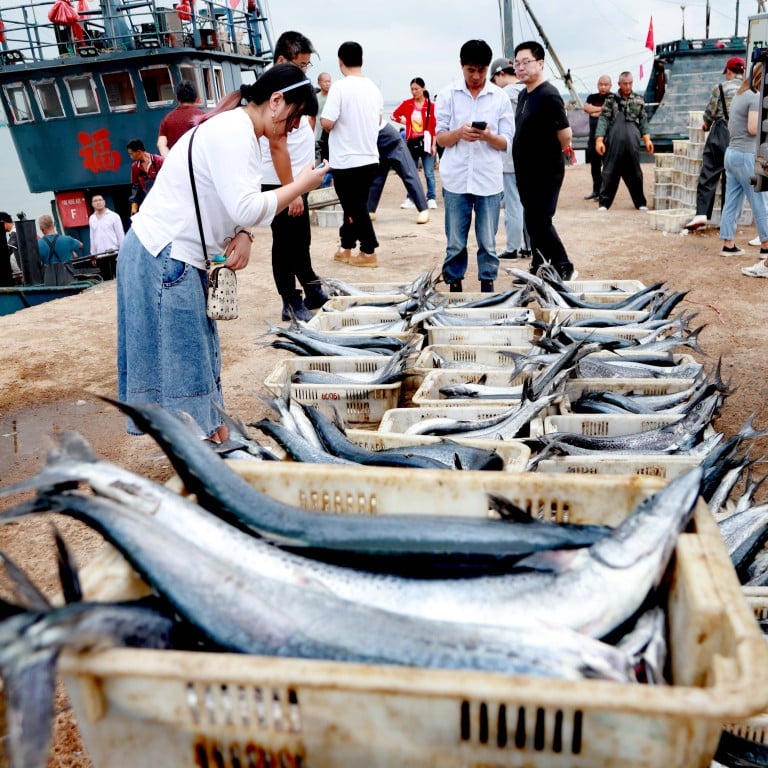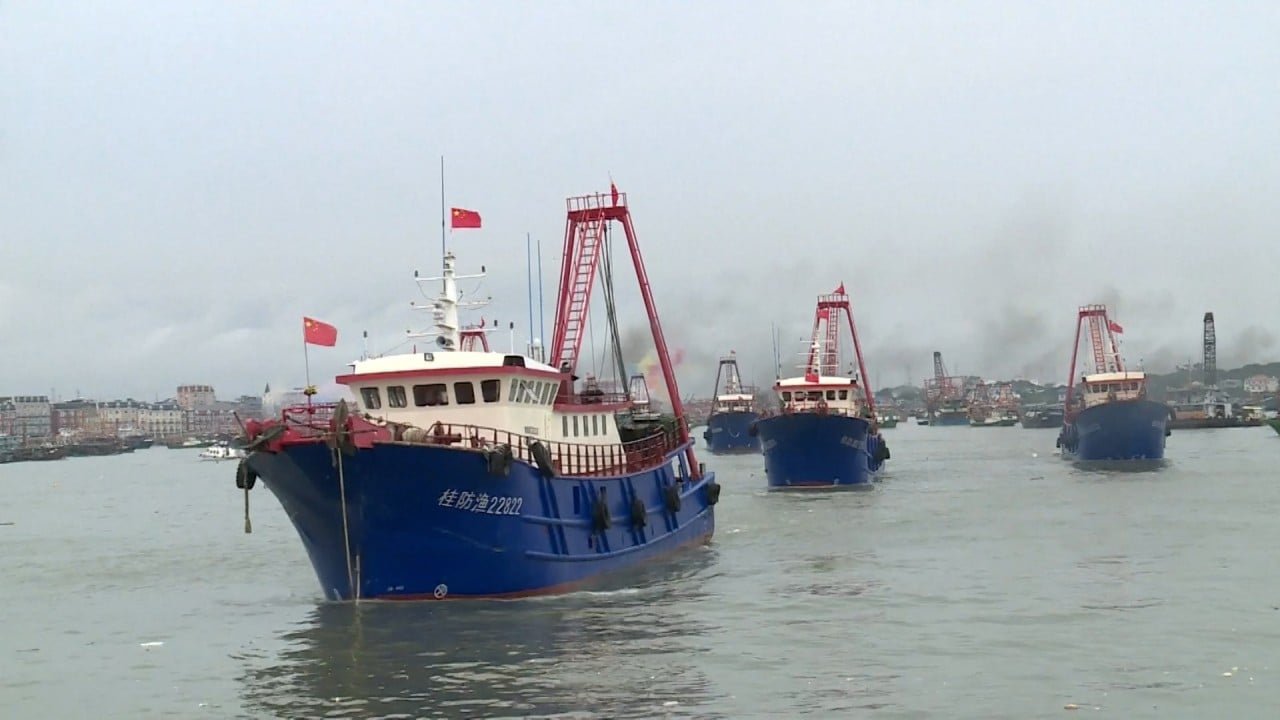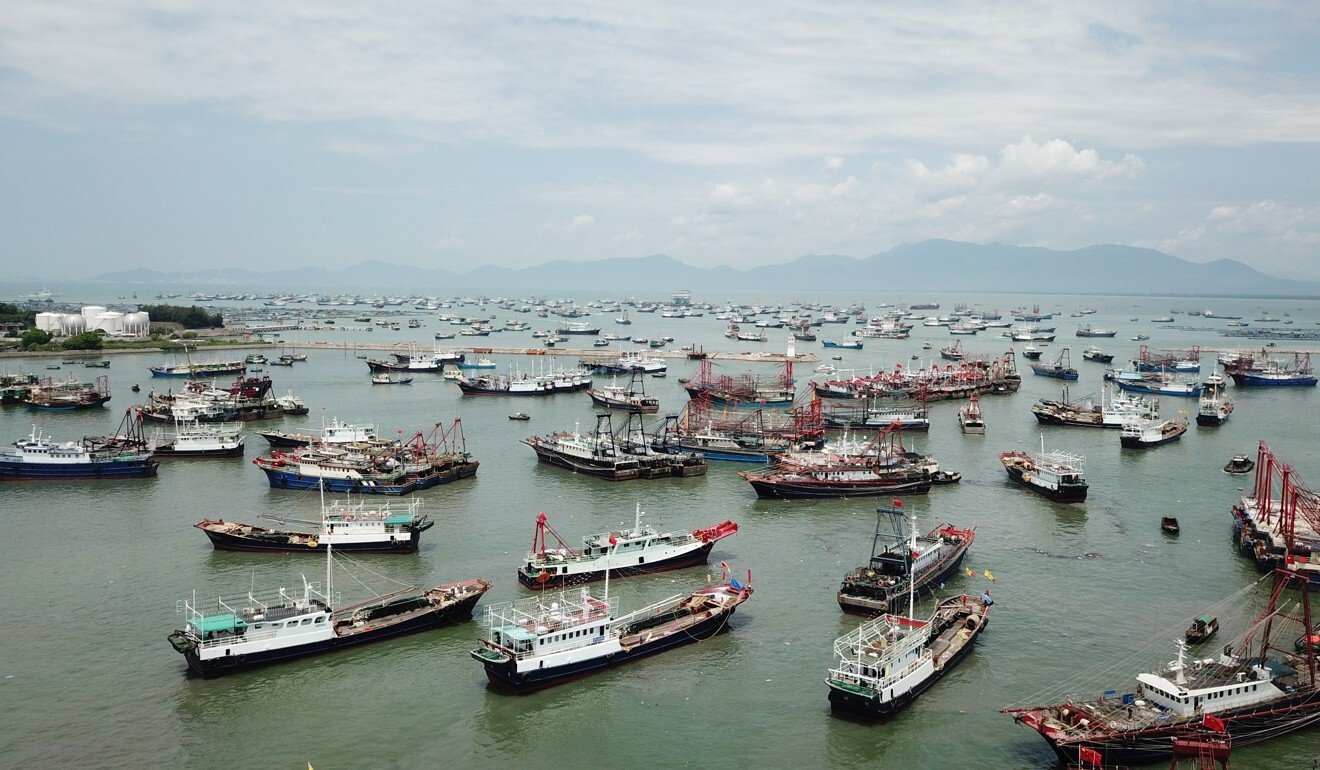
Plenty of fish in the ocean? Not so around China, says study warning of seafood collapse
- Scientists modelled the impact of climate change and overfishing in the South and East China seas by 2100
- They say immediate action is needed to enforce sustainable fishing practices and mitigate climate threats

01:37
Chinese fishing boats return to disputed South China Sea after summer moratorium ends
“This is especially the case in the tropical waters of the South China Sea, where many fish species are already facing the limits of their heat tolerance,” Sumaila said.
Even in the best-case scenario, where greenhouse emissions were kept low and fishing activity was reduced by 50 per cent, the South China Sea fisheries would still see a 22 per cent drop in the biomass of key commercial species, and annual revenue decreasing by US$6.7 billion by 2100, according to the study.
China staring at deadly floods, heatwaves and pestilence as climate change hits home, study finds
However, the East China Sea, which borders mainland China, Taiwan, Korea and Japan, could have a stronger recovery under mild climate change and reduced fishing activity, and see a 20 per cent increase in biomass by 2100, according to the research.
“When we did the modelling, we checked and checked and checked again. We thought hard about what could be happening there,” Sumaila said. It could be the types of fish in the East China Sea, as some species are able to thrive in warmer waters.
Another reason is the northward migration of some fish species from tropical and subtropical waters, such as the South China Sea, in response to warming ocean temperatures.
In addition, more than seven fishing nations are active in the South China Sea, each with different policies and practices. The more parties fishing that do not coordinate, the worse shape the region will be in compared to one that has fewer nations involved, Sumaila said.

Co-author and University of Hong Kong honorary professor Yvonne Sadovy said wild fish stocks were also stressed by the increase in catches of so-called feed-grade fish used to make meal for fish farms.
“Because many species require large volumes of feed-grade fish, this is adding to the problem of overfishing and declines in stocks in the region,” said Sadovy, a researcher in sustainable fisheries and conservation.
“Small fishes and shellfish are being caught and sold at relatively low prices to the farming industry. So we can end up with an attempt to catch as much protein as possible from the sea to go into farming.”
China has the world’s largest fishing fleet, hauls in the biggest catch, and its saltwater aquaculture industry was worth 384 billion yuan (US$60.07 billion) in 2020, data from the Ministry of Agriculture showed. The country accounted for more than 62 per cent of the global aquaculture production, according to the study.
In 2016, half of mainland China’s trawler catch consisted of feed-grade fish. The country was responsible for the majority of feed-grade fish landings in the region – 85 per cent in the East China Sea and 57 per cent in the South China Sea – in recent years, the study said.

04:17
Free-diving ‘sea women’ of South Korea fight climate change threatening their fishing tradition
If fleets were to only catch mature adult fish, such as by using nets with larger holes, the study estimated the average annual catch in tonnes and the average revenue would increase over a business-as-usual scenario. This is because fish can reach maturity, marketable sizes, and fetch higher prices, Sadovy said.
Under a rebuild scenario that leaves juvenile fish to reach maturity, Guangdong’s annual average catch could more than triple, and the revenue could increase by more than 18-fold compared to business-as-usual feed-grade fishing, according to the research.
The researchers found that reductions in fishing for the first 10 years of the modelled period could have lasting positive impacts in restoring fish stocks over the long term.
They recommended regional dialogue to promote collaborative multinational fisheries management, reduce feed-grade fishing, and integrate climate change and fisheries management policies, according to the study.
“Fish is more valuable than diamonds,” said Sumaila from the University of British Columbia. “Because you dig a diamond out, and it’s gone. You cannot dig the same diamond twice. But you can keep taking fish forever if you can manage it well.”

